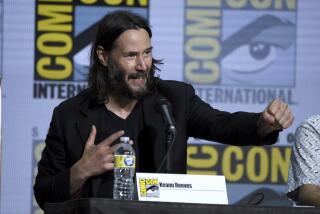âThe Man From Beijingâ by Henning Mankell
In the frozen woods of the Swedish hinterlands, a lone wolf gnaws on the frozen corpse of an elderly man. The nearby village is covered in snow and deathly quiet. Inside the small homes lie the slaughtered bodies of 18 more victims, all but one of the dead are old and infirm. The sole exception, a young boy, has been cleaved in two by a long knife or sword.
The haunting opening images of Henning Mankellâs âThe Man From Beijingâ read like a decidedly un-Disney-fied Grimmâs fairy tale. But as the title suggests, this is a modern story: If not ripped from todayâs headlines, itâs certainly inspired by them.
News of the mass murder finds Swedish judge Birgitta Roslin frozen in her own personal winter. Mired in a career rut and loveless marriage, Roslinâs ennui is shattered by the realization that several of the murder victims are distant relations. Out of personal curiosity rather than professional duty, Roslin begins to investigate.
Taciturn, cynical and interested in the existential meaning of the murders, Roslin is a sort of Nordic Miss Marple -- the heroine detective as re-imagined by Kierkegaard. Though a dogged investigator, Roslin initially retains an existentialistâs remove from her quest and the seemingly absurd, pointless nature of all human endeavor, especially her own.
When she stumbles on a similar mass murder committed half a world away (in Nevada), Roslin becomes convinced that she will be the next murder victim. Her aloof intellectual curiosity gives way to a refreshingly nonintellectual desire to save her own skin.
Roslinâs search for the killer spans centuries and continents. As she sifts through historical records and diaries to track suspects and unravel motives, the narrative jumps from the 19th century American West to the villages of China and the jungles of modern-day Mozambique, complete with a cameo appearance from Zimbabweâs President Robert Mugabe. Eventually, the trail leads to the Peopleâs Republic of China, where the old student radical Roslin, once an admirer of Maoist doctrine, is confronted by the results and wreckage of Maoist practice.
Fans of Mankellâs earlier Kurt Wallander mystery series will enjoy the intellectual provocations of the new book. Part police procedural, part political manifesto, Mankell manages to wrap an erudite analysis of imperialism around an entertaining whodunit.
Not even fellow Swede Stieg Larsson has managed to pull that off.
Mankell and Larsson have sold millions of books around the world. Yet Larsson, who died in 2004, remains the bigger star, thanks to âThe Girl With the Dragon Tattooâ and its sequel (the third installment, âThe Girl Who Kicked the Hornetâs Nest,â is due in May). High-tech thrillers with pornographic sensibilities, Larssonâs sleek, guilty pleasures are filled with the kind of graphic, stylized violence that appeals to a depressingly large swath of humanity. More like novelized computer games, the books even have a hyper-sexualized, sadomasochistic-tinged heroine at their center, as different in style and substance from Mankellâs Roslin as one could imagine. Like teenage gamers waiting for the newest version of their obsession, Larssonâs fans are eager for his third book. But they do so with bittersweet anticipation: Unless Larssonâs publishers are able to produce a fourth book, which is believed to exist as an incomplete manuscript, this will be his last work. Game over.
All of which raises the question: Who is the better writer? The answer, of course, depends on your taste and mood.
Like the songs of ABBA, Larsson is sometimes insipid but never boring; like the plays of August Strindberg, Mankell is often dull but never stupid. Larssonâs books are immediately addictive and impossible to put down. Mankellâs books are an acquired taste, as catchy as a cello sonata, but filled with the kind of deep, ruminative writing that rewards concentration and patience.
Quentin Tarantinoâs reportedly interested in adapting Larssonâs books into movies; PBS already adapted Mankellâs Wallander books for the small screen with Kenneth Branagh in the lead -- they were such a low-key affair that, though I watched them, for the life of me, I canât recall a single thing about them.
But Mankell is not trying to be cinematic. The âthrillingâ part of his thrillers is not the car chases or shootings but the deeper human truths revealed. âThe Man From Beijingâ suffers from stilted language (perhaps the fault of the translator) and clunky plot devices (not one but two 19th century diaries, one kept by a Swedish sadist, the other by his Chinese victim, neither written with the otherâs knowledge yet with poignantly overlapping narratives). Yet the book stays with you. It raises important questions about modern China and its role in the world; about the responsibility of the West, especially toward its former colonies; about the meaning of revenge. Even with its flaws, the book cements Mankellâs reputation as Swedenâs greatest living mystery writer.
And, no, thatâs not just because Larsson is dead.
Shapiro, a former federal prosecutor, is an adjunct law professor at the Gould School of Law at USC. He writes and produces for television.
More to Read
The biggest entertainment stories
Get our big stories about Hollywood, film, television, music, arts, culture and more right in your inbox as soon as they publish.
You may occasionally receive promotional content from the Los Angeles Times.










